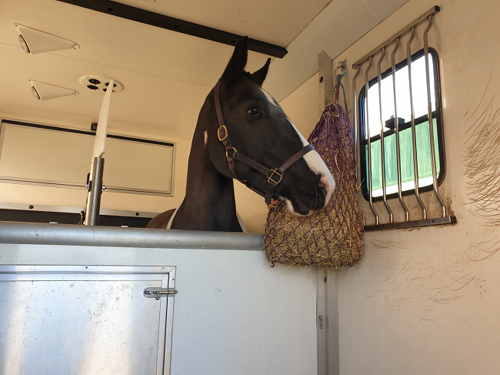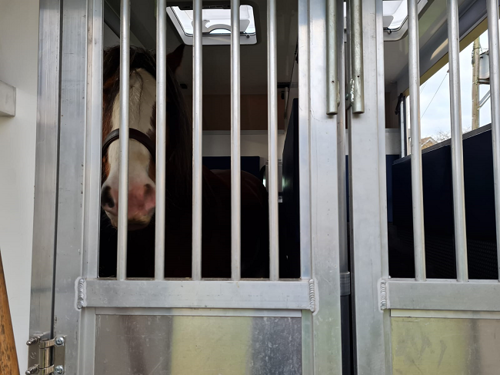The Not-So-Secret Diary of Diva the Shetland Pony – Layout of the Horse Area
30 January 2025
Horseboxes with a payload of 7.5 tonnes or above are usually designed so that the horses travel herringbone in the horse area with the partitions sideward. The rise in popularity of 3.5-tonne boxes has led to two styles of horse area depending a little on what the base vehicle is. Horse transport companies traditionally favoured a chassis with a twin rear axle so that a flat tyre did not mean they had to immediately stop, but could travel onto their destination or a safe place to repair the tyre. These vehicles had horse stalls situated above the rear axle, facing forwards.

When the trailer towing regulations changed, there was a surge in demand for 3.5-tonne lorries that could be driven on a basic licence. At this time horsebox builders began to use a single-axle chassis that meant the horse area could be between the front and rear axles. This brought improved stability for the vehicle as the centre of gravity was lower. The horses travel rear-facing in these vehicles.

It is this type of horsebox that I have the most experience with, and both our more modern Bloomfields and our original old Dereham have the horses standing between the axles.
Traditionally, there was a half wall between the horse and groom’s area with small access doors for people to go through. Our Dereham is built to this format with the half wall being approximately four feet high. The Bloomfield has a full wall with a door between the horse and groom’s areas with tack lockers on both sides and a narrow breast bar between them. We have made a solid barrier to slide into the gap for when we travel with the Shetland ponies.

The other format seen more recently is called stallion stall. This is where the whole of the horse area is separated from the groom’s area with doors and there are no breast bars, so there is no potential for a horse to attempt to climb over into the groom’s area. Some stallion stalls do still have a collapsible breast bar in each stall to give the horses something to lean on but most don’t.
There have been instances where horses with the half wall have jumped over into the groom’s area, which is scary and dangerous for all concerned. However, it is worth remembering that there are tens of thousands of these horseboxes and only a relatively few incidents in comparison to the numbers that travel like this. So, depending on your budget and your horse’s or pony’s temperament, one with a half wall may still be appropriate to buy. Some horses find the stallion stall claustrophobic and don’t settle, as the centre partitions are usually high and the stall can be dark.

Accidents can happen in whatever vehicle you use to transport your horse or pony, as it is impossible to predict what will happen on every trip. But one thing to ensure safety is to drive carefully, with steady acceleration away from junctions and slow speeds on corners.
